Vosteed x ReyLight Rook Warm White Flashlight Review
Vosteed and ReyLight collaborated to make the Rook, an 18350 flashlight available in many colors and with warm and cool emitter options!
Official Specs and Features
Here’s a link to the Vosteed x ReyLight Rook warm white flashlight product page.
Versions
Two emitter options are available: Nichia 519a (4000K, R9080) and Cree XP-L HI (6000K). The product page indicates the Cree option might only be available for an Orange body. There are body colors, too. Orange (seen here), Grey, Black, Red, and Blue have all been produced (and may or may not be in stock at the moment.)
Price
Aside from the Cree XP-L HI option, which is $74, all the other options come in at a nice $69. This includes an 18350 cell, too!
Short Review
The Vosteed x ReyLight Rook flashlight is a nice entry into the flashlight world for Vosteed. While I won’t say it’s perfect, I can say that it draws on a long line of nicely-made flashlights by ReyLight, and has some very well-thought-out choices. The build quality is good and the price is very reasonable, too. This one is a winner for me!
Long Review
The Big Table
| Vosteed ReyLight Rook warm white flashlight | |
|---|---|
| Emitter: | Nichia 519a (Warm White) (4000K) |
| Price in USD at publication time: | $69.00 |
| Cell: | 1×18350 |
| Runtime Graphs | |
| LVP? | Yes |
| Switch Type: | Mechanical |
| On-Board Charging? | Yes |
| Charge Port Type: | USB-C (on cell) |
| Charge Graph | |
| Power off Charge Port | No |
| Claimed Lumens (lm) | 1800 |
| Measured Lumens (at 30s) | 1168 (64.9% of claim)^ |
| Candela per Lumen | 2.6 |
| Claimed Throw (m) | – |
| Candela (Calculated) in cd (at 30s) | 155lux @ 4.545m = 3202cd |
| Throw (Calculated) (m) | 113.2 |
| Claimed CCT | 4000 |
| Measured CCT Range (K) | 3700-3800 Kelvin |
| Item provided for review by: | Vosteed |
| All my Vosteed reviews! | |
^ Measurement disclaimer: Testing flashlights is my hobby. I use hobbyist-level equipment for testing, including some I made myself. Try not to get buried in the details of manufacturer specifications versus measurements recorded here; A certain amount of difference (say, 10 or 15%) is perfectly reasonable.
What’s Included
- Vosteed x ReyLight Rook warm white flashlight
- Vosteed x ReyLight Rook 4.07Wh 18350
- Charging cable (USB to USB-C)
- Spare o-rings (2)
- Stickers (2 types)
Package and Manual
There is no manual.
Build Quality and Disassembly
Despite this being Vosteed’s first foray into flashlights, it’s quite good! They teamed up with ReyLight, which is very well-known in the flashlight world. All of that adds up to a very nice freshman entry into the flashlight market!
In addition to being nicely built, the body is of interesting design – it’s called the Rook because it is made to favor the Chess piece of the same name. Plus! It’s orange!
Below you can see inside the head – there’s a spring (I’d call it a “q-lite spring” but maybe that’s just me.) There’s also a retaining ring for the driver. The pill appears to be screwed in and is copper. Note the threads, too. They’re unanodized, fine, and moderately long.
The tail end also has a spring.
While the tailcap is technically removable, I’d recommend using the head for cell access.
One interesting feature of the Vosteed ReyLight Rook warm white flashlight is the many (7) tritium slots. There are four around the tail.
The metal switch cover also has three tritium slots.
All in all, the build quality is good. I don’t find the threads to be super smooth, but more importantly, they’re just a little hard to get started. As fine as they are, it’s sometimes a concern that they might cross-thread. But just be careful – if you’re careful you won’t have any problem.
Another note is that the light is quite angular. The tail in particular has quite a few right-angle parts, and you’ll probably notice that in hand. Again, not a big deal, but something that might be a little different from other similar lights.
Size and Comps
The official size is 80mm x 25mm and 3.5 oz(100g) with battery.
If the flashlight will headstand, I’ll show it here (usually the third photo). If the flashlight will tailstand, I’ll also show that (usually in the fourth photo).
Here’s the test light with the venerable Convoy S2+. Mine’s a custom “baked” edition Nichia 219b triple. A very nice 18650 light.
Also above is the light beside my custom engraved TorchLAB BOSS 35, an 18350 light. I reviewed the aluminum version of that light in both 35 and 70 formats.
Retention and Carry
A pocket clip is included and attached to the Vosteed ReyLight Rook flashlight. First let’s talk about the clip you see below.
Above is a titanium clip. If you buy the Rook now (outside of the Kickstarter), this is the clip you’ll get.
This is a fine clip, and it’s a clip ReyLight has used on many lights before (Dawn, Krystal). It’s a beefy clip with a big mouth. It attaches with two Torx screws. All in all, a solid clip.
If you purchased through Kickstarter, you receive that titanium clip.
A second option exists, though. That’s the stainless clip seen below.
The stainless clip has a more matte finish.
The clips are quite similar, but the titanium has a different bend profile, as well as a larger opening around the screw hole (Meep Meep!)
Swapping the clips is easy – just two Torx screws.
Below you can see the comparison of the two – titanium is on the right below.
Both are actually very good, and both have aspects I like. The titanium clip is more finished – the edges are broken (smoothed) for example. But the titanium is very nice because it’s thinner and more giving.
Update: I think Vosteed has switched completely to the titanium clip now, and everyone will receive titanium!
Power and Runtime
Power to the Vosteed ReyLight Rook flashlight is from an included 18350 cell. This cell is a button-top, and sort of long – more on that in a bit.
However, it’s a standard cell (generally). This means you can use standard 18350 cells (even flat-tops) in the Vosteed ReyLight Rook flashlight. If you use the very shortest flat top though, you might notice a bit of rattle.
Here are a couple of runtime tests. I didn’t observe the claimed 1800 lumens, and the stepdown begins in earnest at around 30 seconds. I tested the default modes, but the mode groups are such that you don’t always get all the highest modes on any one group. That’s ok, but it’s not my favorite feature.
The light does shut off with low voltage protection at around 2.9-3V.
Charging
The Rook itself does not have built-in charging, but the included cell does. It’s by way of a USB-C charging port on the positive end.
A USB to USB-C cable is included.
It’s subtle, but the cell has a charge indicator in the center of the button. Below it’s red, which means “charging” and will turn blue when charging is complete.
The cell seems to stop charging at around 4.12V – 4.13V. Both USB and USB-C (C to C) charging work fine.
Modes and Currents
For this table I tested only the default mode groups.
| Mode | Mode Claimed Output (lm) | Claimed Runtime | Measured Lumens | Tailcap Amps |
|---|---|---|---|---|
| 100% | 1800 | – | 1167 | 6.10 |
| 20% | 360 | – | 308 | 0.78 |
| 2% | 36 | – | 44 | 0.17 |
| Moonlight | – | – | 0.68 | ~ (low) |
Pulse Width Modulation
PWM is present on the higher three default modes. It’s fast though, and you’re very unlikely to be able to see it (without a scope).
Here you can see a “baseline” – a chart with almost no light hitting the sensor.
Then there’s the Ultrafire WF-602C flashlight, which has some of the worst PWM I’ve seen. It’s so bad that I used a post about it to explain PWM! Here are multiple timescales (10ms, 5ms, 2ms, 1ms, 0.5ms, 0.2ms) to make comparing this “worst” PWM light to the test light easier. That post also explains why I didn’t test the WF-602C at the usual 50us scale.
User Interface and Operation
Vosteed opted for a reverse mechanical clicky on the Rook. The switch has a metal cover, and as stated above, three tritium slots.
From the view above, you can see that the four side tritium slots are “peek a boo” too – they’re visible from the end and side too.
Here’s a user interface table! The user interface is actually the same as is used on some ReyLights, including the LANapple I recently tested.
| State | Action | Result |
|---|---|---|
| Off | Click | Moonlight^ |
| On | Click | Off |
| On | Half Press | Cycle modes (Moonlight, 2%, 20% ,100%)^^ |
| On | Tap 8x | Enters programming mode^^^ |
| On | Double tap | Turbo |
^ If the light is turned back on soon after turning off (within a couple of seconds), the previous mode will be remembered. If more than 2 seconds, the light will turn on into Moonlight.
^^ The light is user programmable, so only the default output levels are listed here.
^^^ In programming mode, the emitter will blink, then strobe. There are five selections a user can make in programming mode. The selections follow a “blink then strobe.”
The first group blinks once then strobes. This is the mode group selection.
The second group blinks twice then strobes. This is the memory toggle.
The third group blinks three times then strobes. This is the moonlight toggle.
The fourth group blinks four times then strobes. This is the mode order toggle (lowest to highest or highest to lowest).
The fifth group blinks five times then strobes. This is the factory reset option.
To interact with any of the programming options, you must tap during the strobe section following that option. So to toggle the memory, first enter programming, then wait until the strobes after the second blink. Tap the switch. I did say “tap” but a full click probably works just fine too.
LED and Beam
A couple of options are available (at least for the orange body, and at least at some times when they’re in stock). A Cree XP-L HI option is available and commands a $5 premium. Cree is the higher output option and also has a much tighter beam. A Nichia 519a option is also available, and that’s what’s tested here.
The Nichia version is warm white and also higher CRI, but much more floody. I am not sure if the Cree throws more simply because of the difference in emitter or if it’s also coupled with a different optic, but the beam profile on the Cree version is much tighter than the beam of the Nichia 519a.
The optic (both of which you can see below) does look the same to me (but I did not disassemble them and check.) In the photo below, Nichia is on the left.
The bezel has teeth, a feature I love.
LED Color Report (CRI and CCT)
Vosteed claims 4000K for the Nichia version, and unlike the cool white version (which was much cooler than the 6000K claim) the warm white is slightly warmer than the 4000K claim. But it’s very consistent, coming in at around 3800k across all modes. That’s very good. Also very good is the CRI, which is high, at above 96. That too is very good!
Beamshots
These beamshots always have the following settings: f8, ISO100, 0.3s shutter, and manual 5000K exposure. These photos are taken at floor level, and the beam hits the ceiling around 9 feet away.
Tint vs BLF-348 (KillzoneFlashlights.com 219b version) (affiliate link)
I keep the test flashlight on the left and the BLF-348 reference flashlight on the right.
I compare everything to the KillzoneFlashlights.com 219b BLF-348 because it’s inexpensive and has the best tint!
Conclusion
What I like
- Low cost (especially in comparison to the quality and features of the Rook)
- Orange body!
- Option for Nichia 519a (for warm white and good CRI) or Cree XP-L HI (for good throw and higher output)
- Simple user interface
- User group options in case the default modes don’t suit
- Includes 18350 cell
- Very nice pocket clip (true about both the stainless and titanium clip!)
- Tritium slots
What I don’t like
- Quite angular (and can be a bit uncomfortable to hold)
- User interface could use some tweaking – even if it was 5 modes with a Moon/2/20/50/100. I want a mode between 20 and 100.
Notes
- This content originally appeared at zeroair.org. Please visit there for the best experience!
- For flashlight-related patches, stickers, and gear, head over to PhotonPhreaks.com!
- Please use my amazon.com referral link to help support zeroair.org!
- Please support me on Patreon! I deeply appreciate your support!






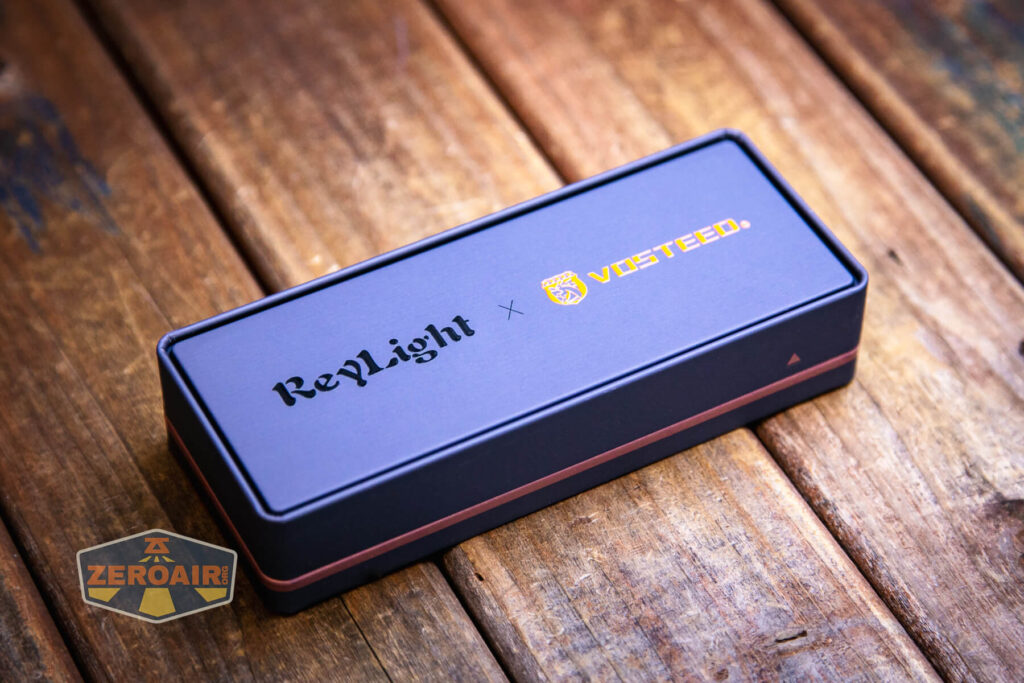
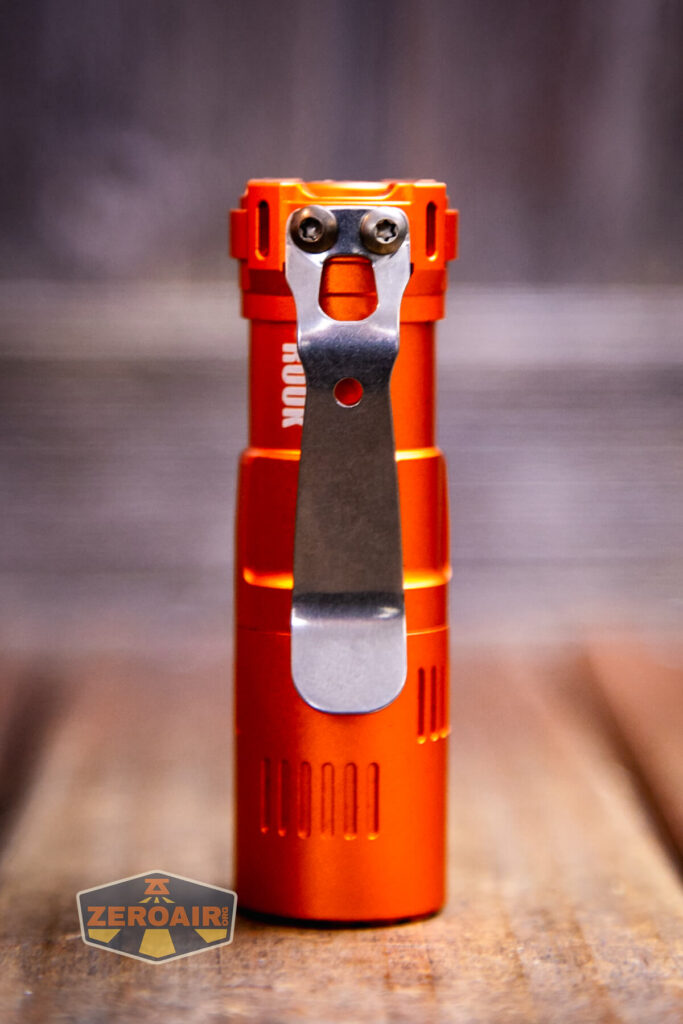




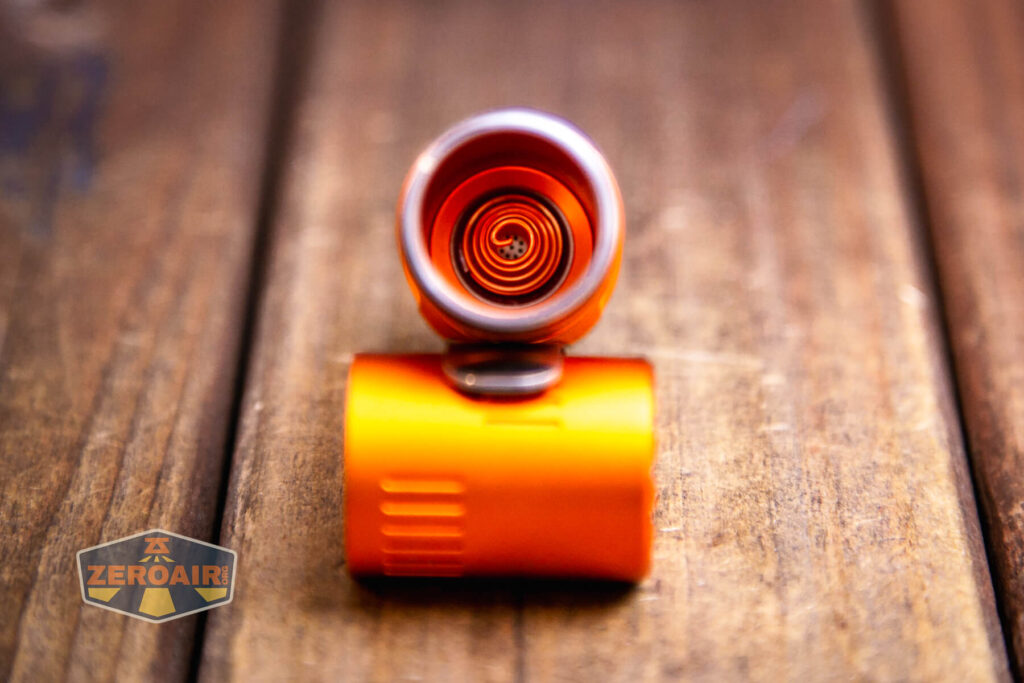
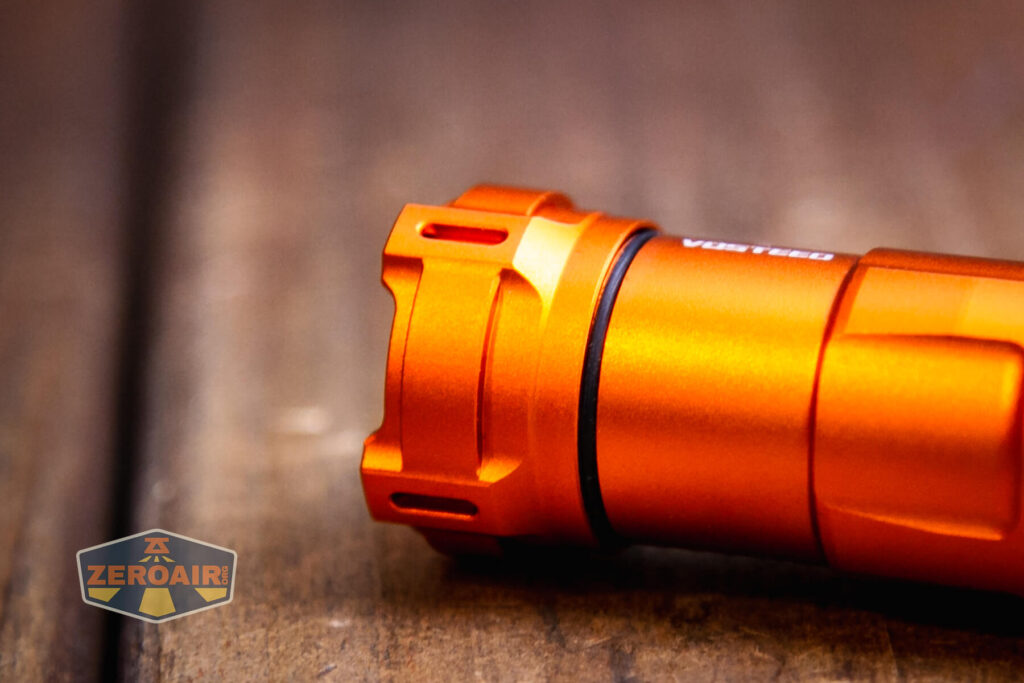
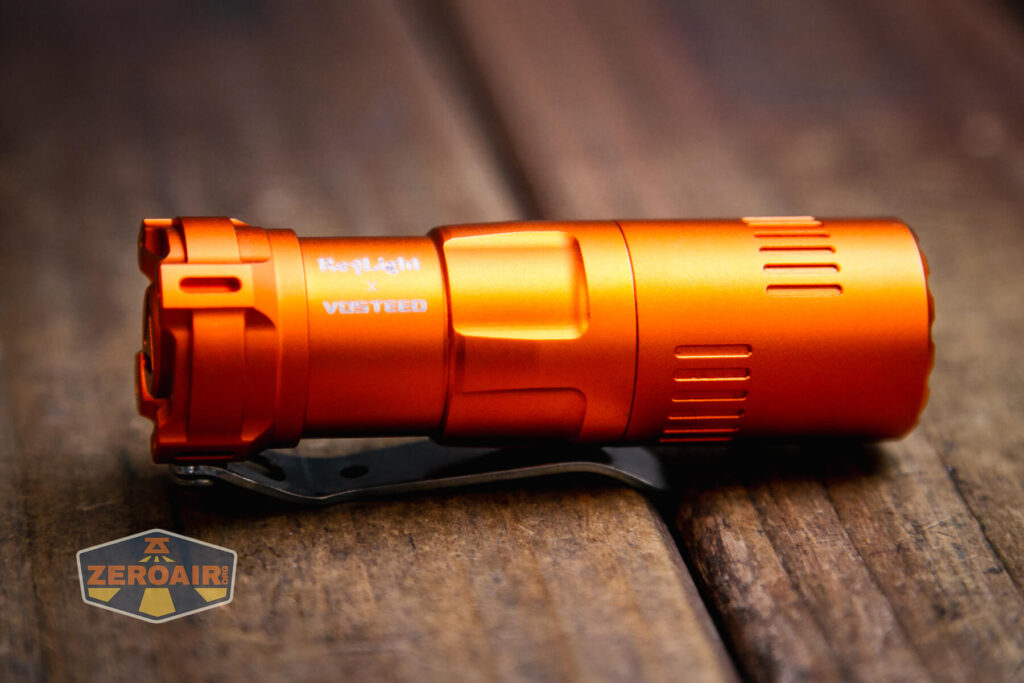


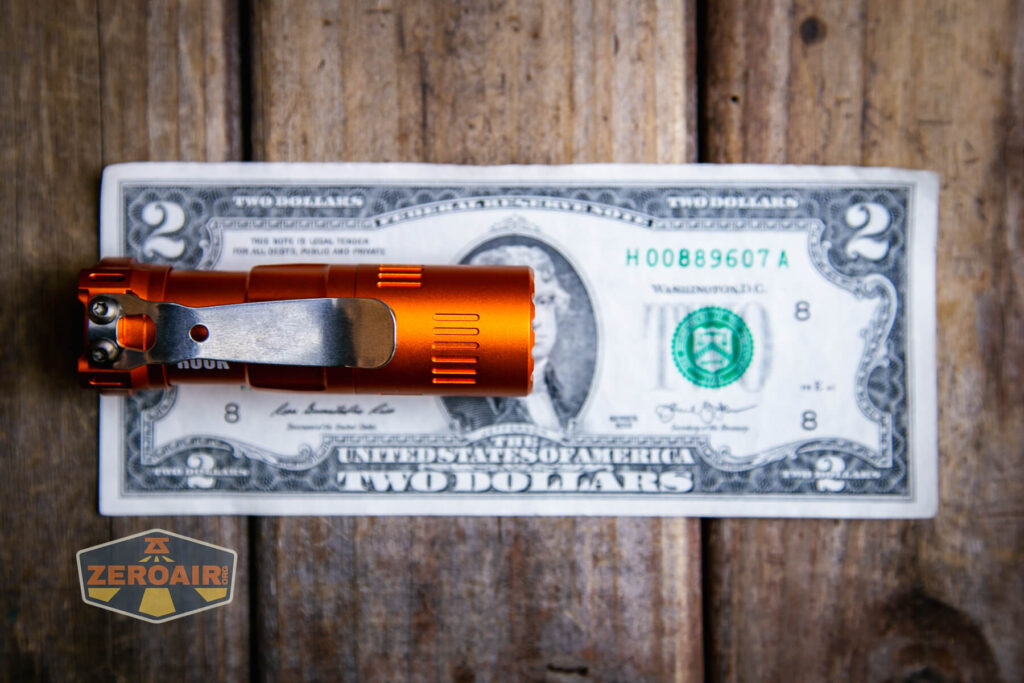
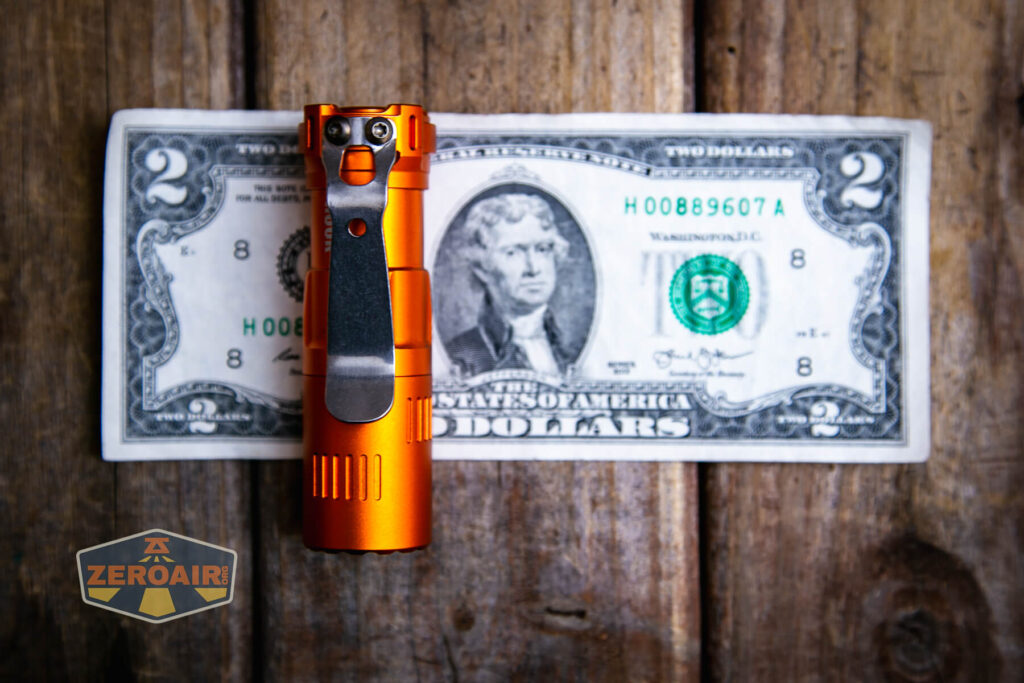
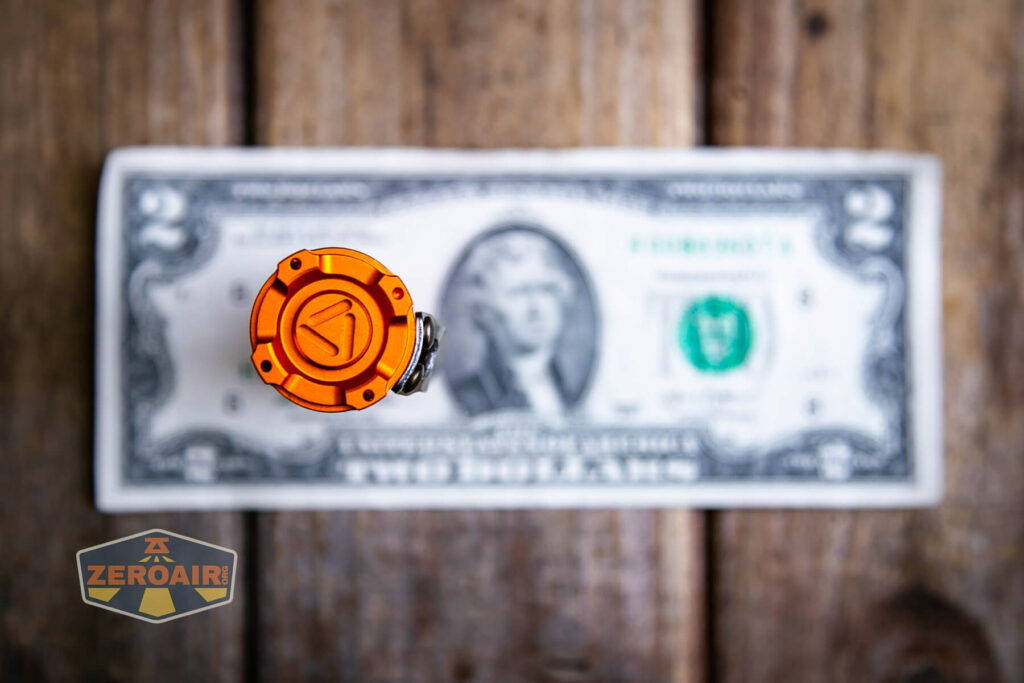

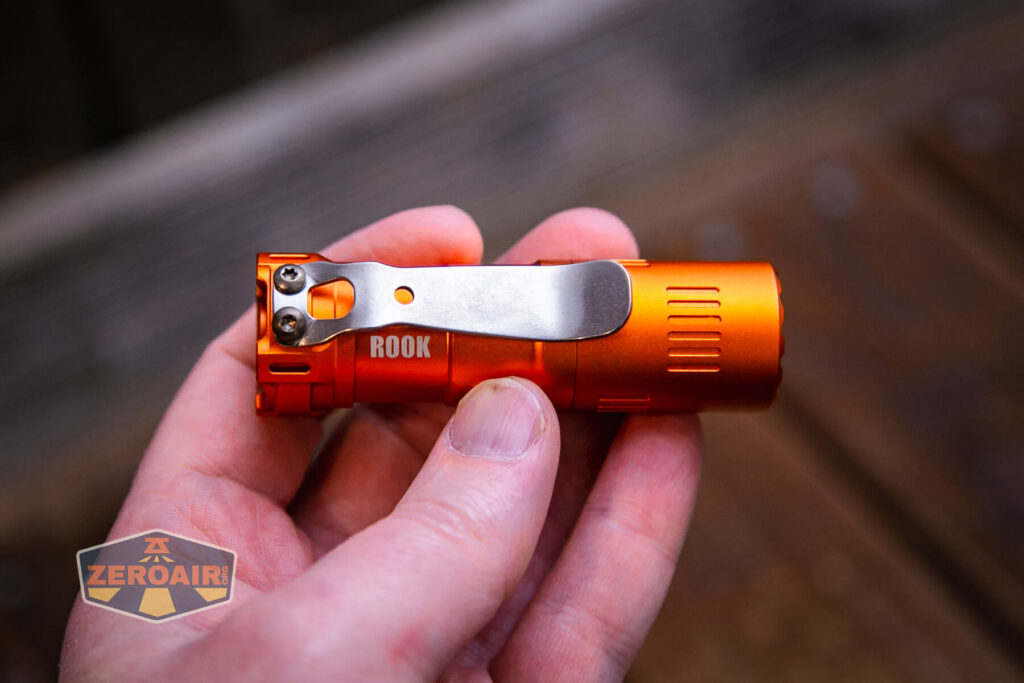
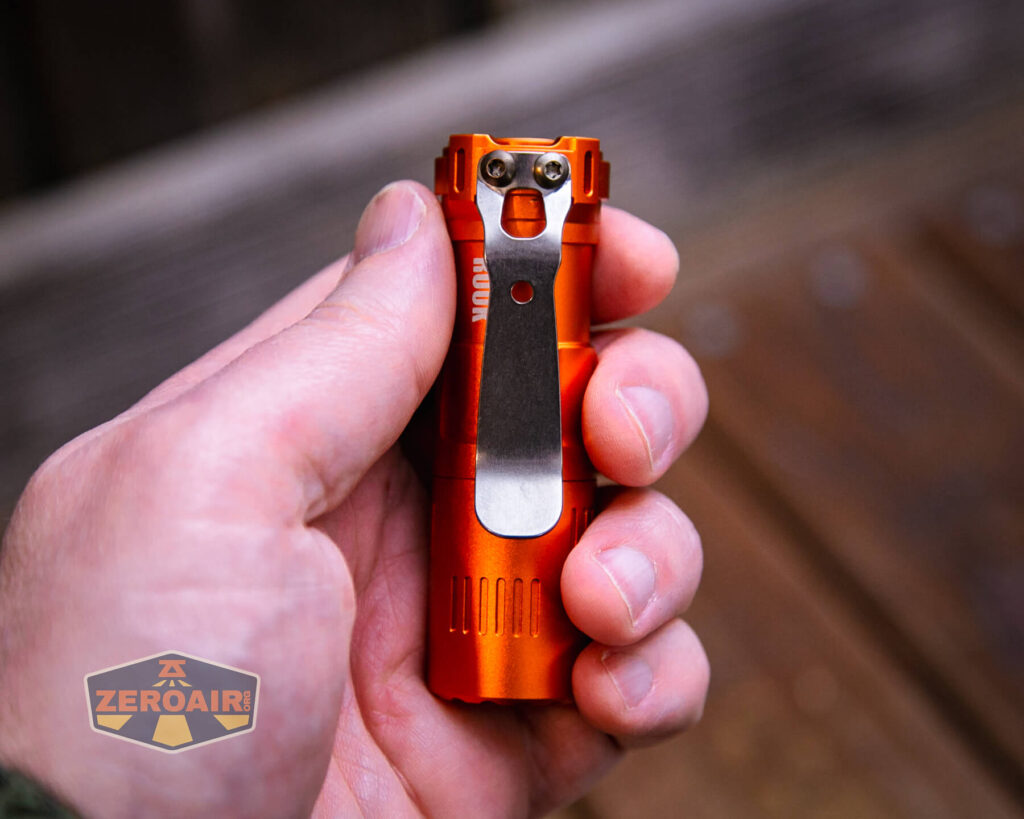

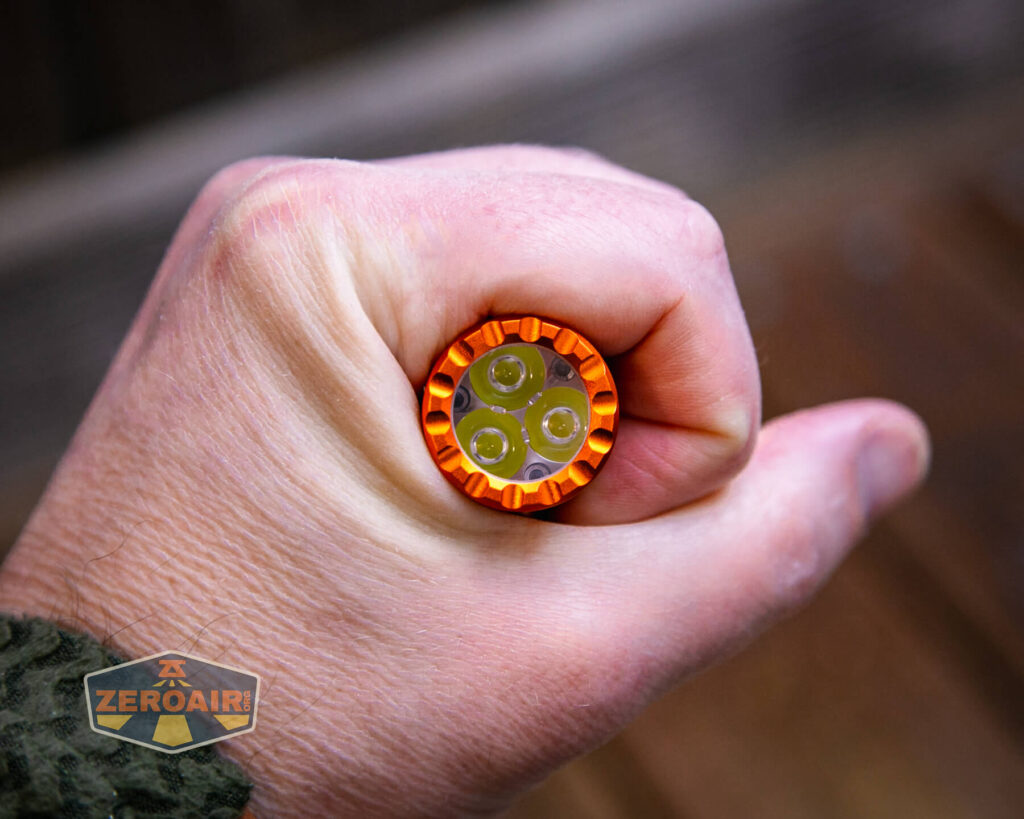


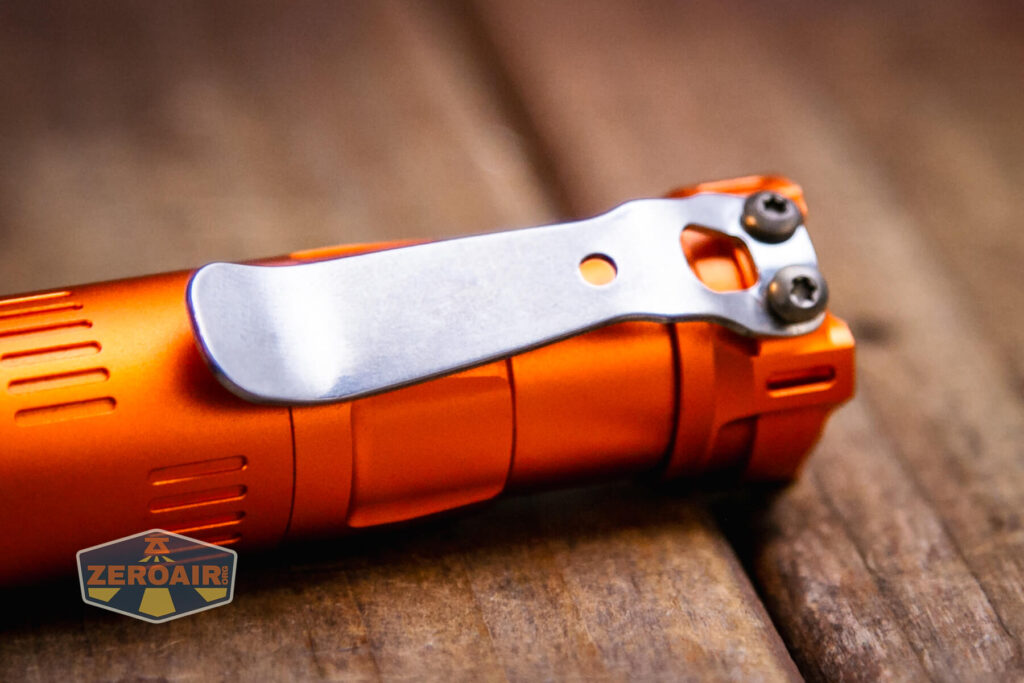


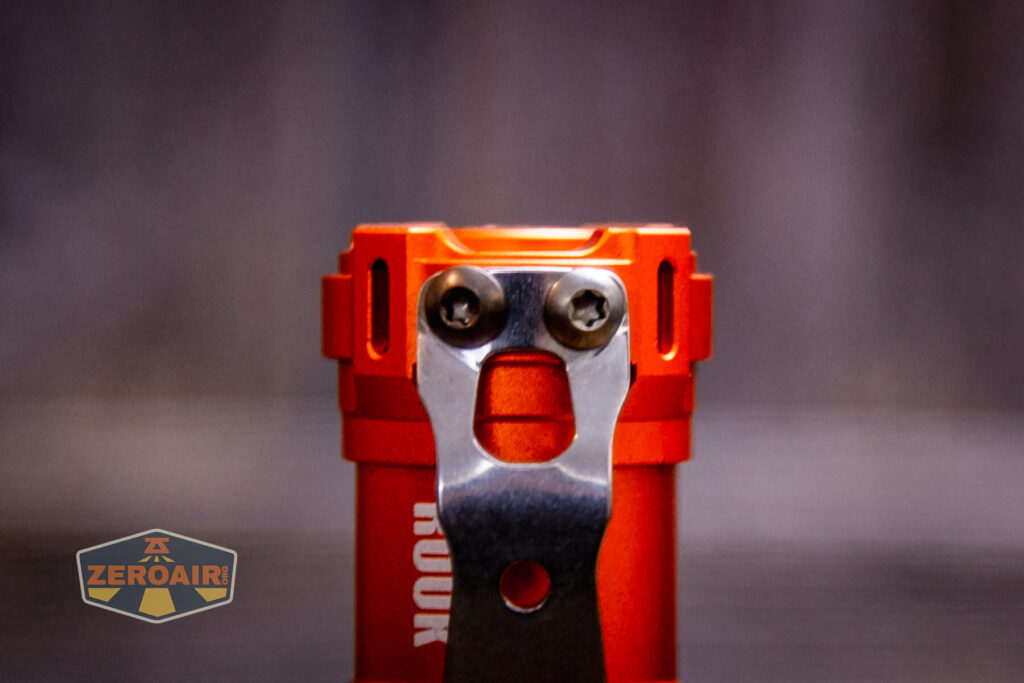


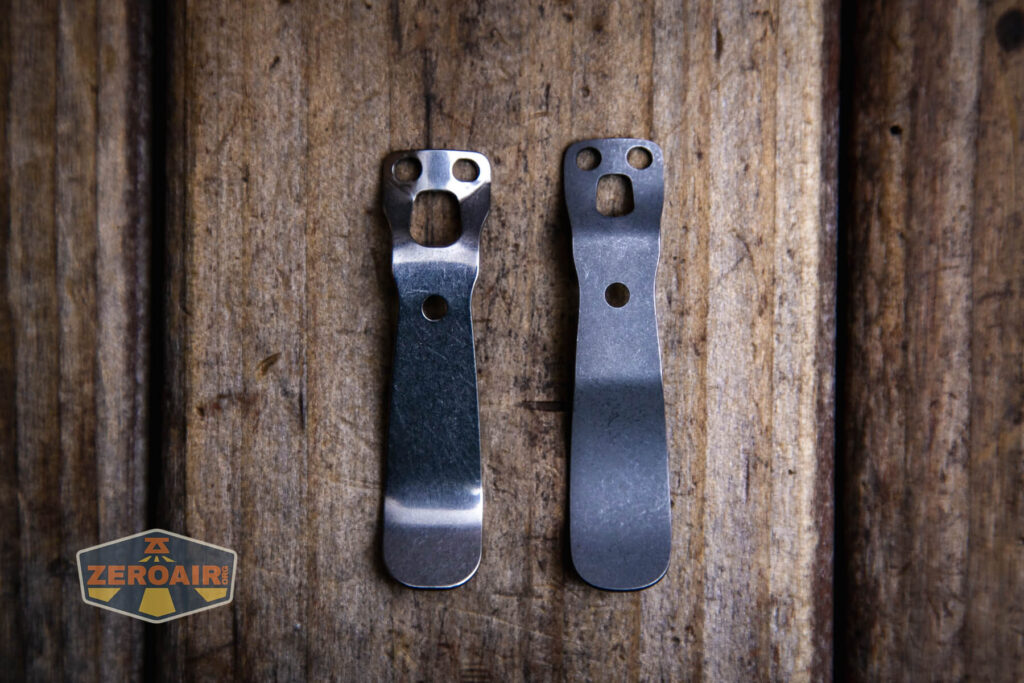





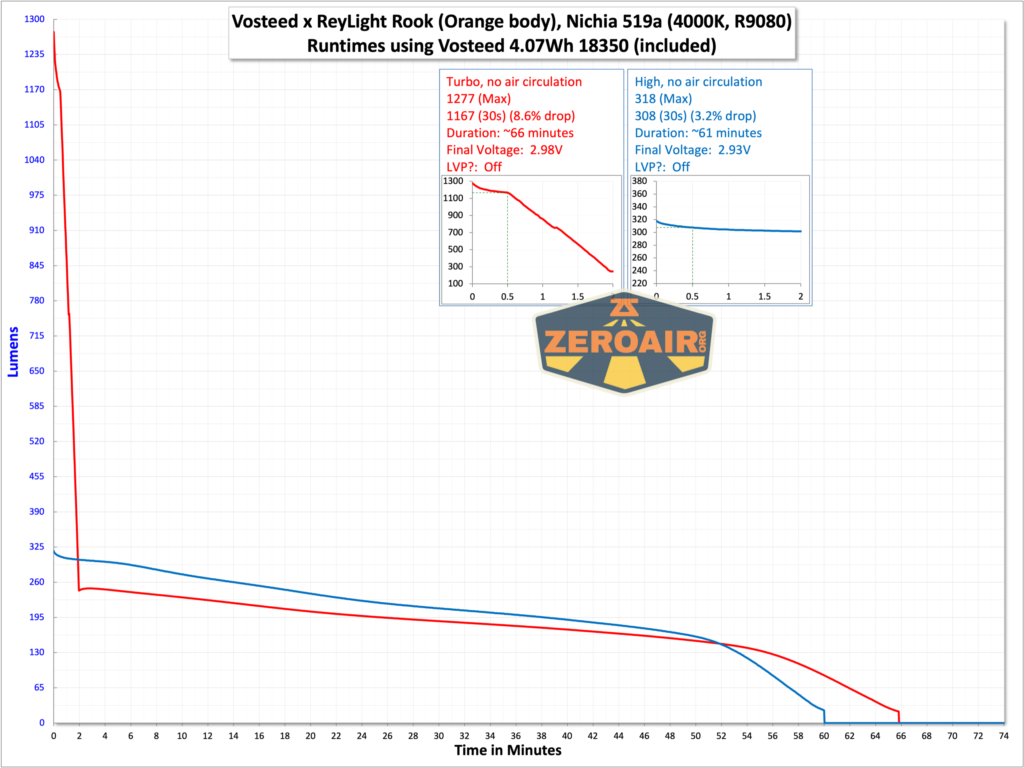



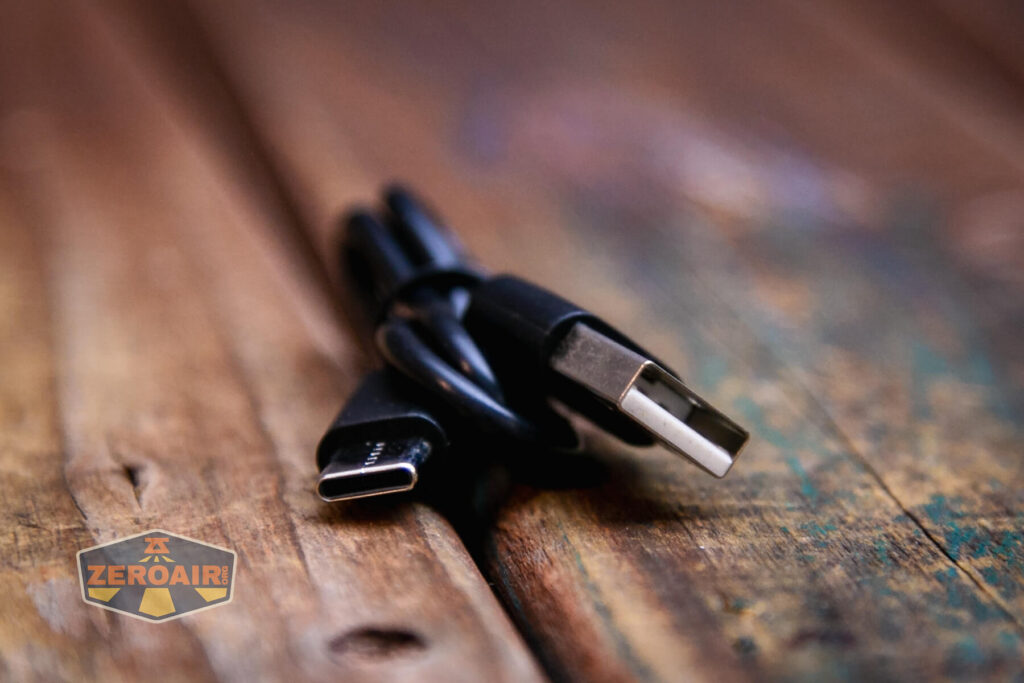

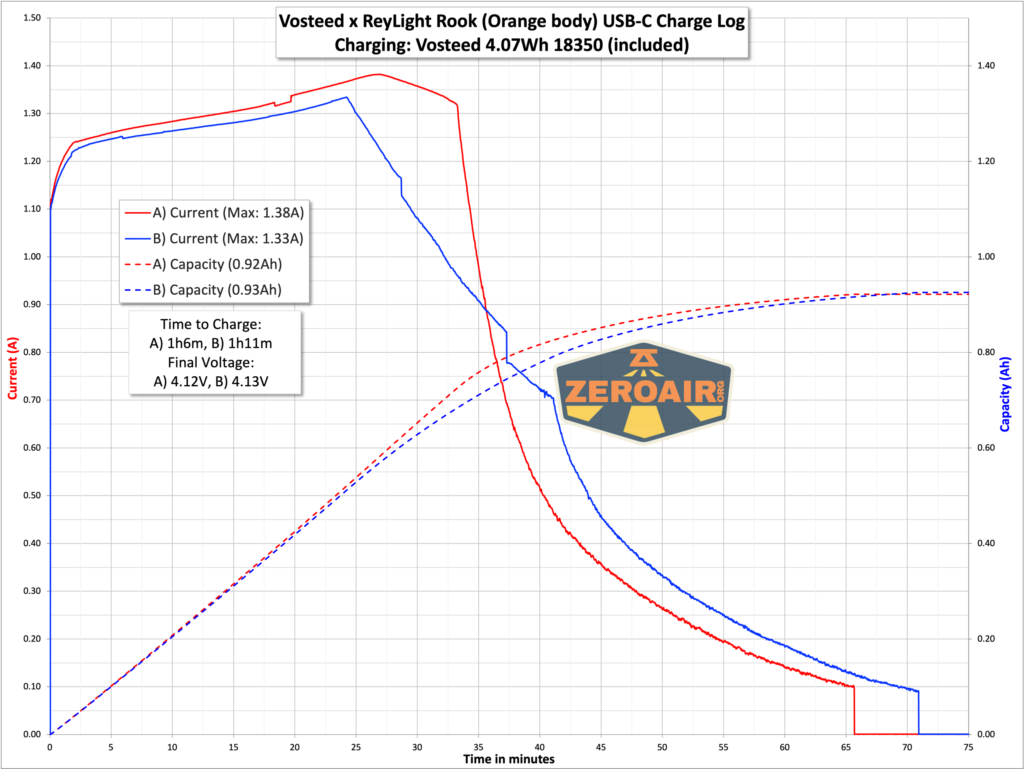

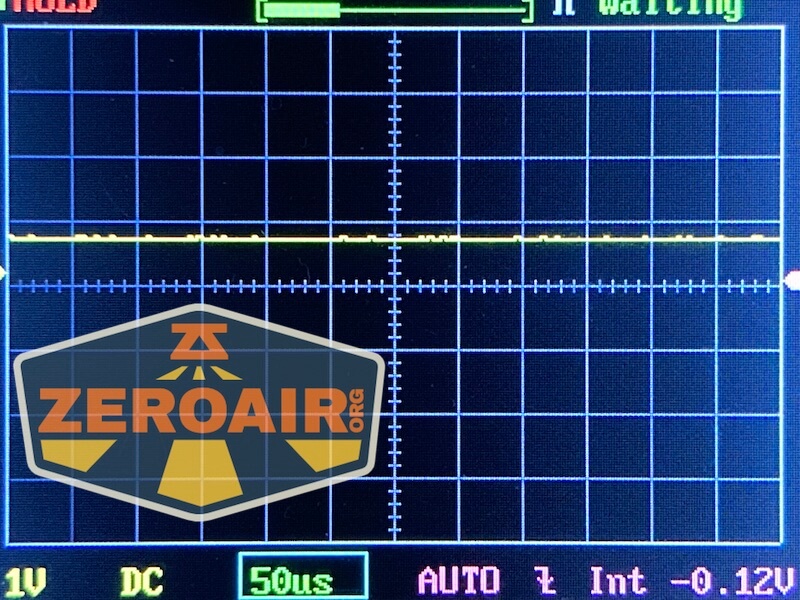

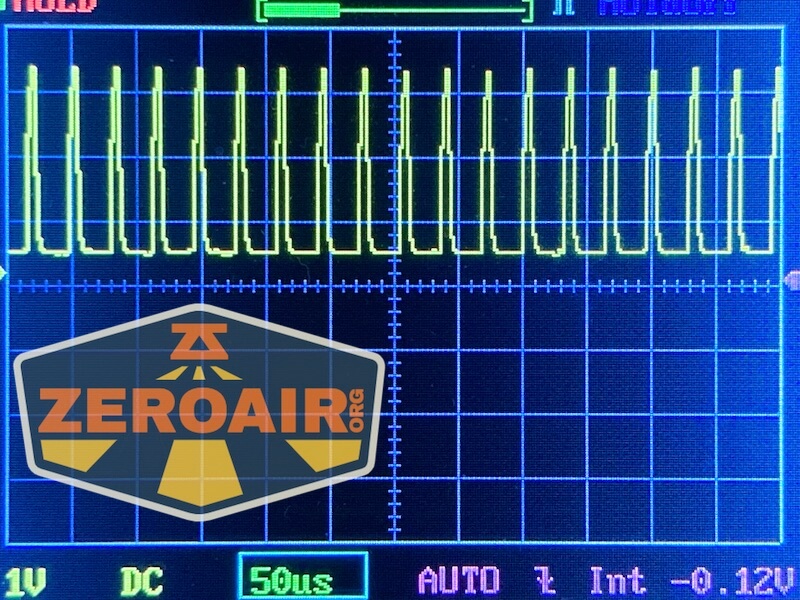
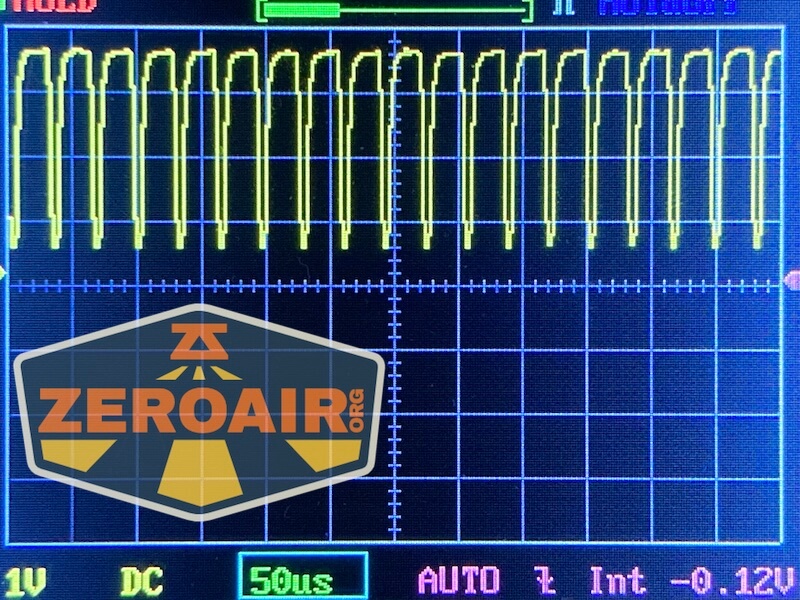


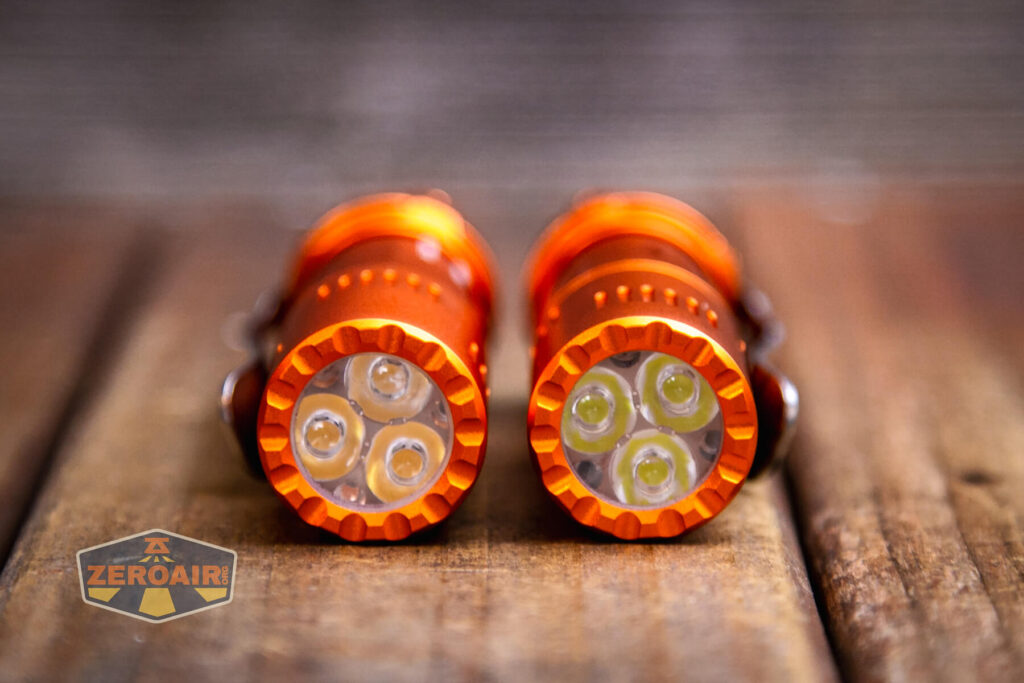



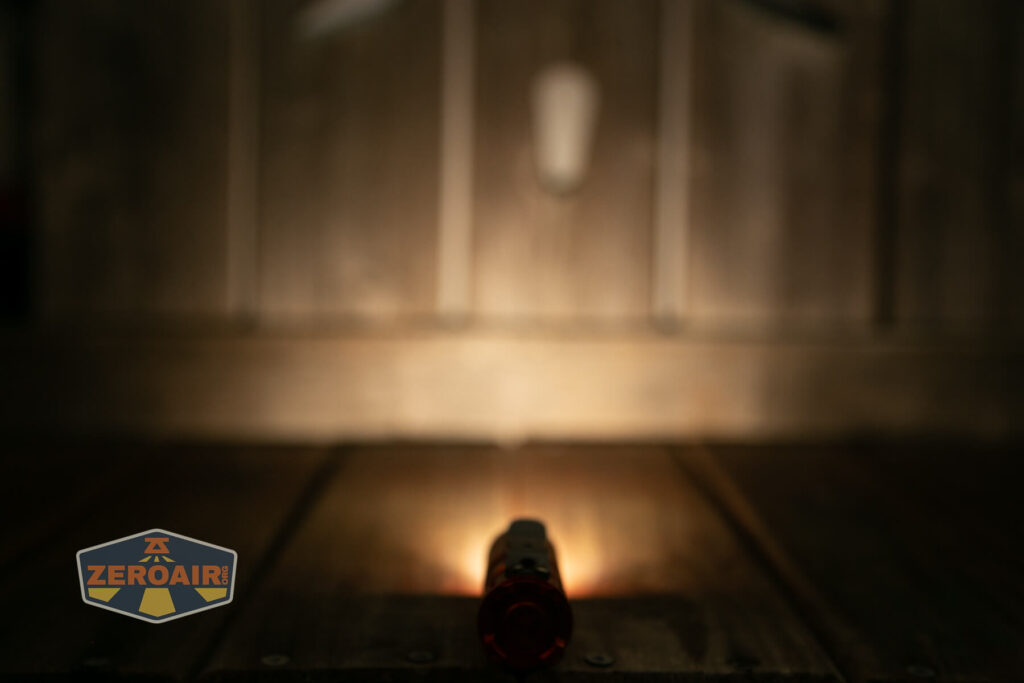
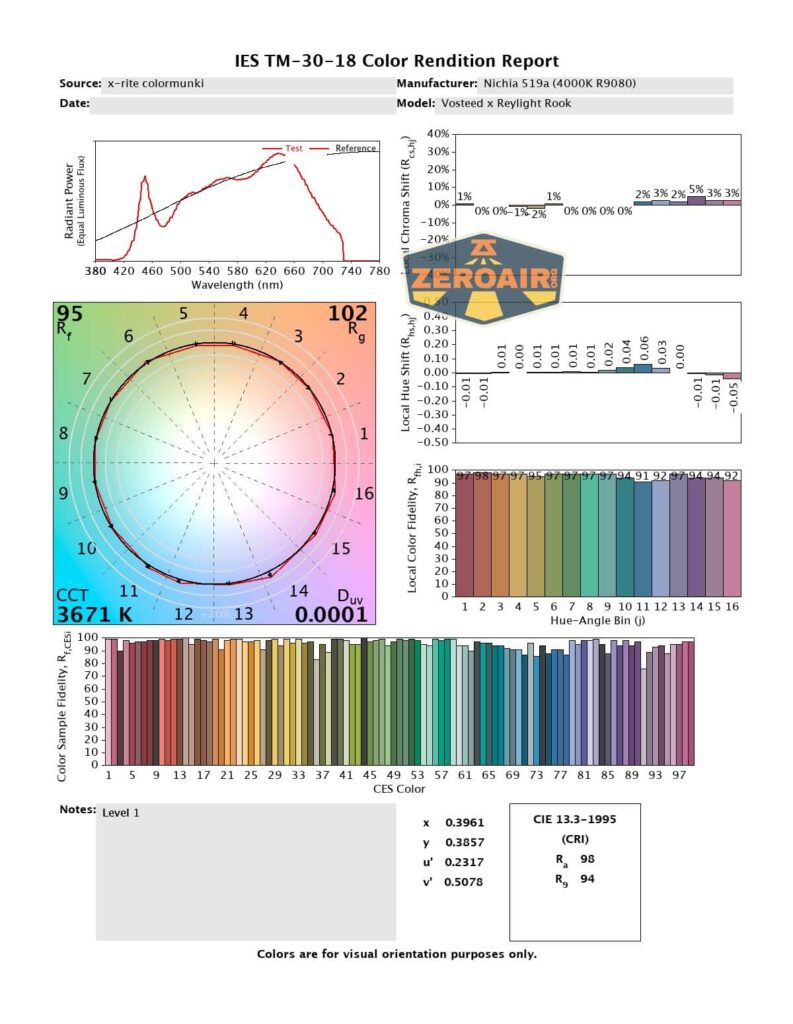
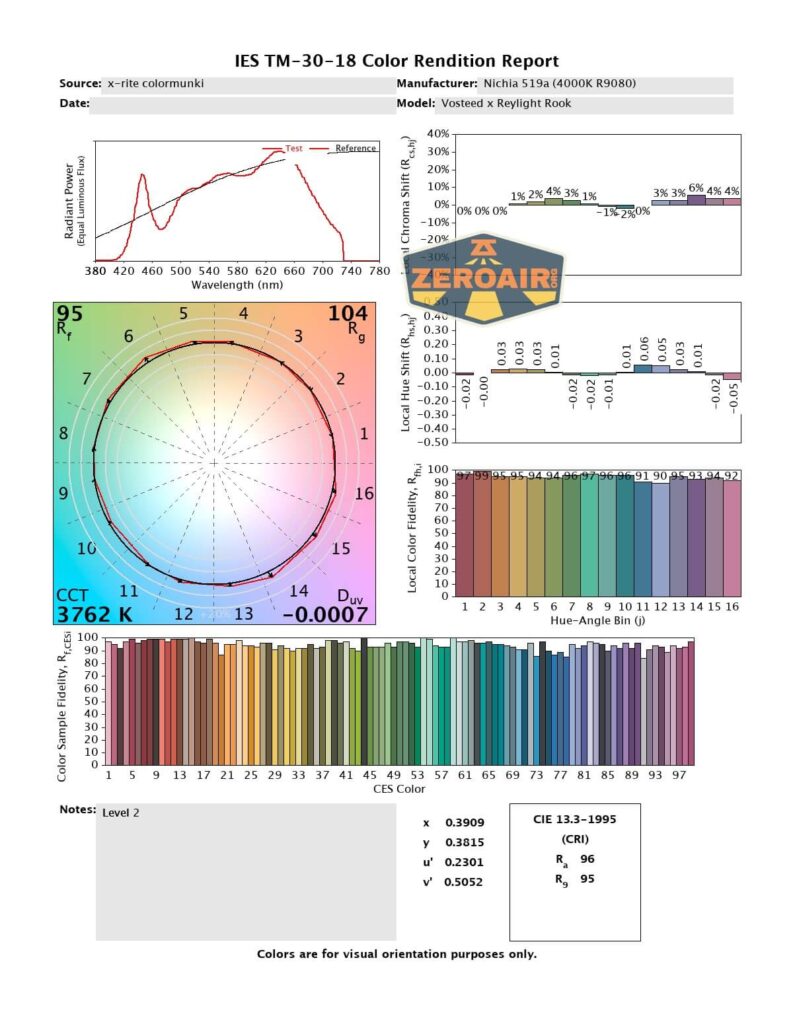


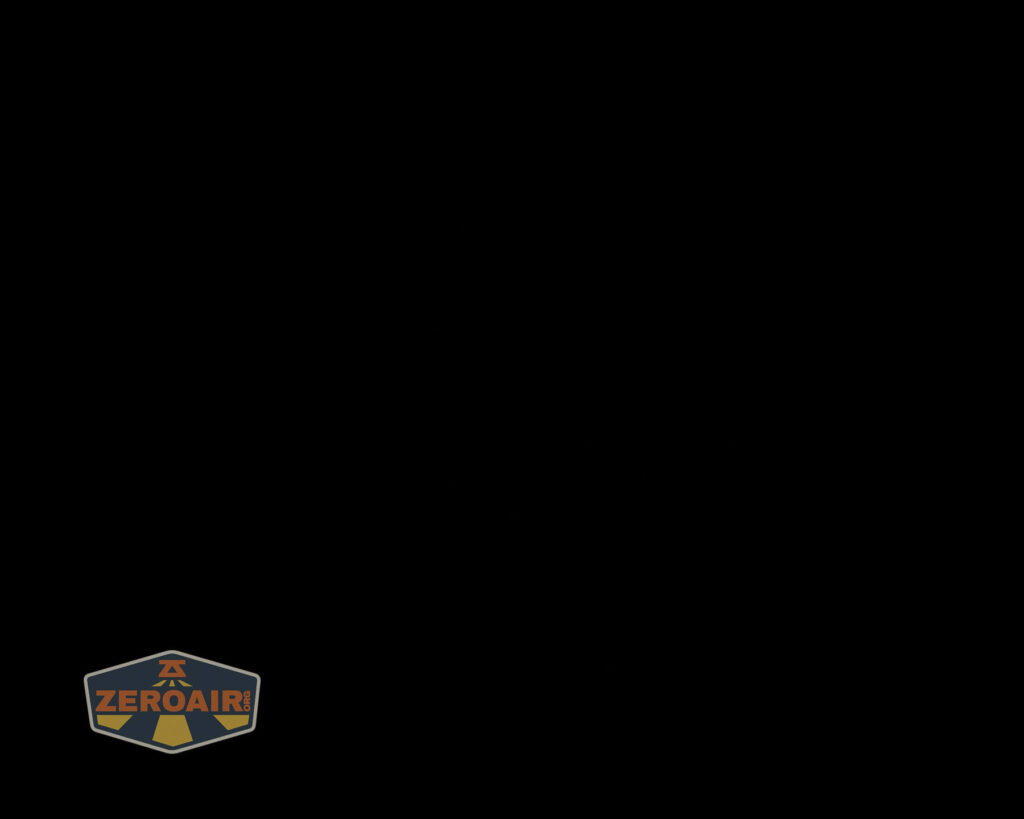



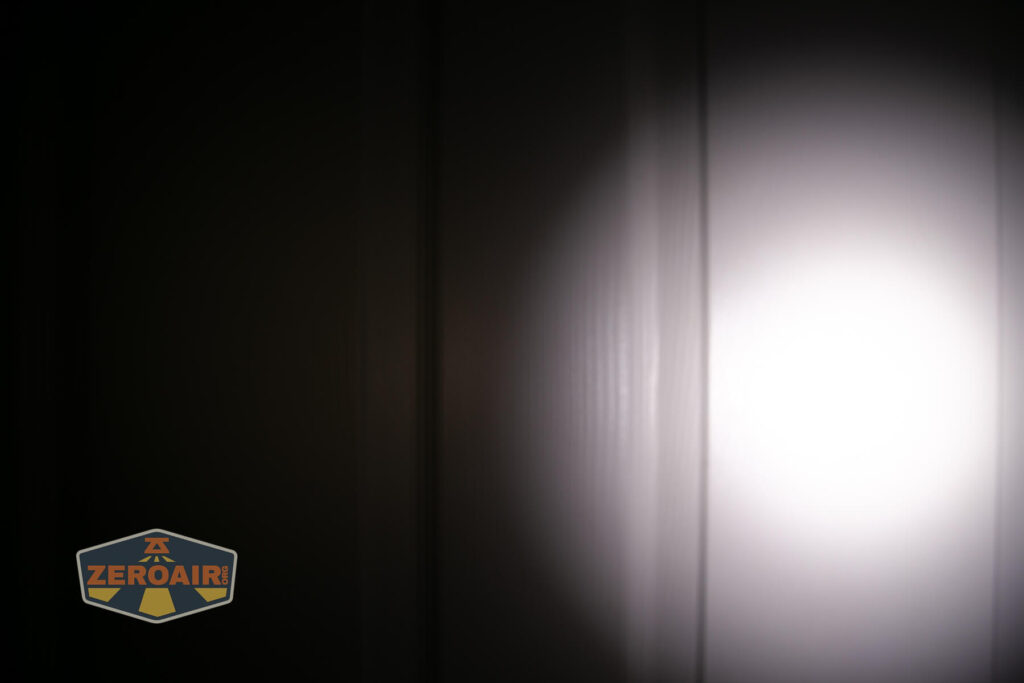

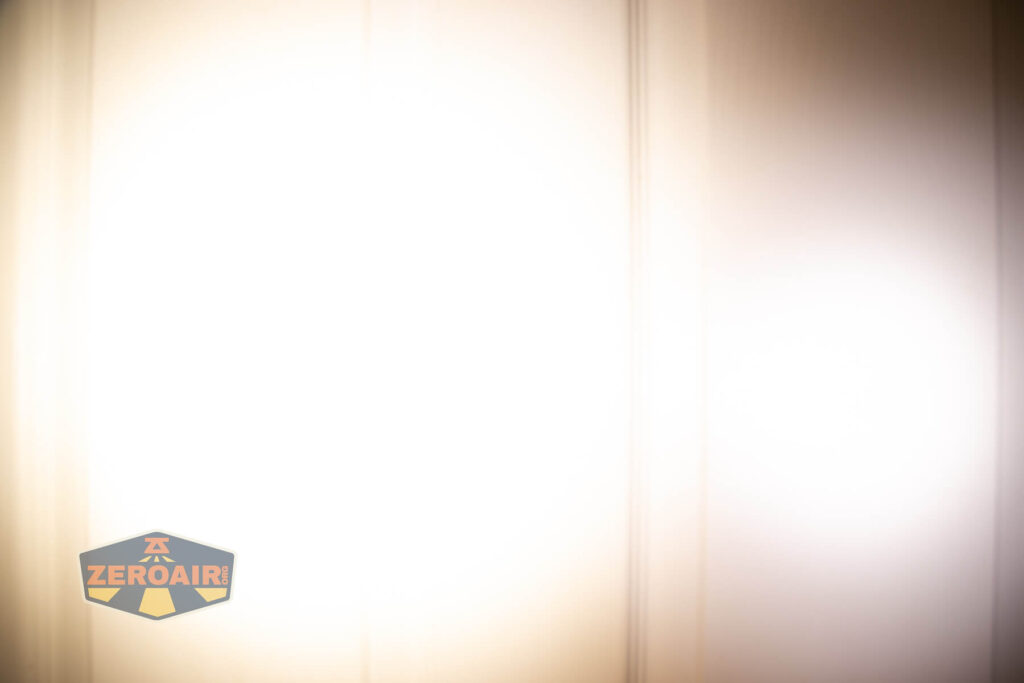

Was going to pick one up, but mostly been picking up lights with better regulation/flatter brightness runtime curves.
I appreciate the fact that it’s got a 519a in 4,000k as an option since it looks fairly close to sunlight in the afternoon. I definitely understand what you mean by wanting something between 20 and 100—one of my older lights had just two modes and it really needed a 75% brightness mode as there are some scenarios where “low” is too low, but “high” will blind you due to needing to the object you’re shining the light on being about 3 feet from your face (eg. inspecting bolt holes or spark plug holes on an engine—the light needs to get into the hole, but the light bouncing off the area around it can be too bright at “high”).